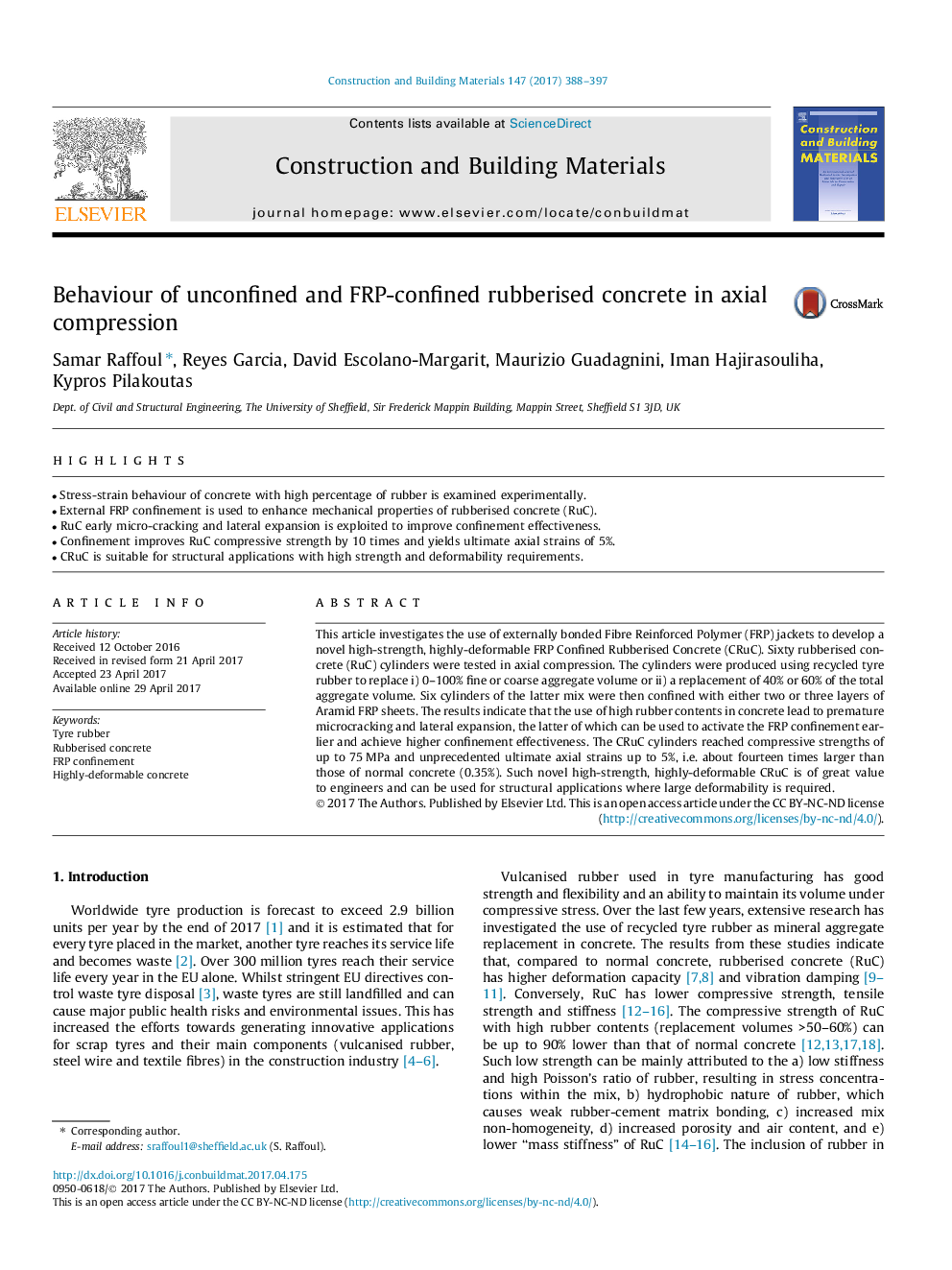| Article ID | Journal | Published Year | Pages | File Type |
|---|---|---|---|---|
| 6480533 | Construction and Building Materials | 2017 | 10 Pages |
â¢Stress-strain behaviour of concrete with high percentage of rubber is examined experimentally.â¢External FRP confinement is used to enhance mechanical properties of rubberised concrete (RuC).â¢RuC early micro-cracking and lateral expansion is exploited to improve confinement effectiveness.â¢Confinement improves RuC compressive strength by 10 times and yields ultimate axial strains of 5%.â¢CRuC is suitable for structural applications with high strength and deformability requirements.
This article investigates the use of externally bonded Fibre Reinforced Polymer (FRP) jackets to develop a novel high-strength, highly-deformable FRP Confined Rubberised Concrete (CRuC). Sixty rubberised concrete (RuC) cylinders were tested in axial compression. The cylinders were produced using recycled tyre rubber to replace i) 0-100% fine or coarse aggregate volume or ii) a replacement of 40% or 60% of the total aggregate volume. Six cylinders of the latter mix were then confined with either two or three layers of Aramid FRP sheets. The results indicate that the use of high rubber contents in concrete lead to premature microcracking and lateral expansion, the latter of which can be used to activate the FRP confinement earlier and achieve higher confinement effectiveness. The CRuC cylinders reached compressive strengths of up to 75Â MPa and unprecedented ultimate axial strains up to 5%, i.e. about fourteen times larger than those of normal concrete (0.35%). Such novel high-strength, highly-deformable CRuC is of great value to engineers and can be used for structural applications where large deformability is required.
